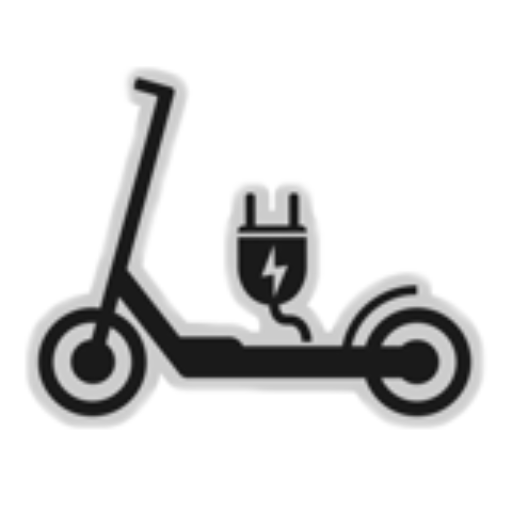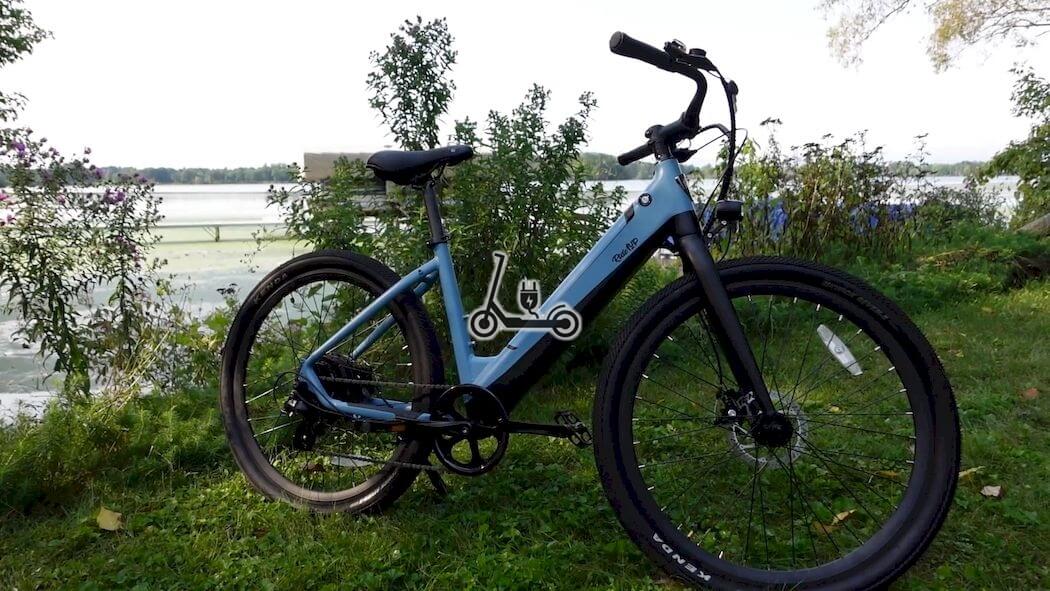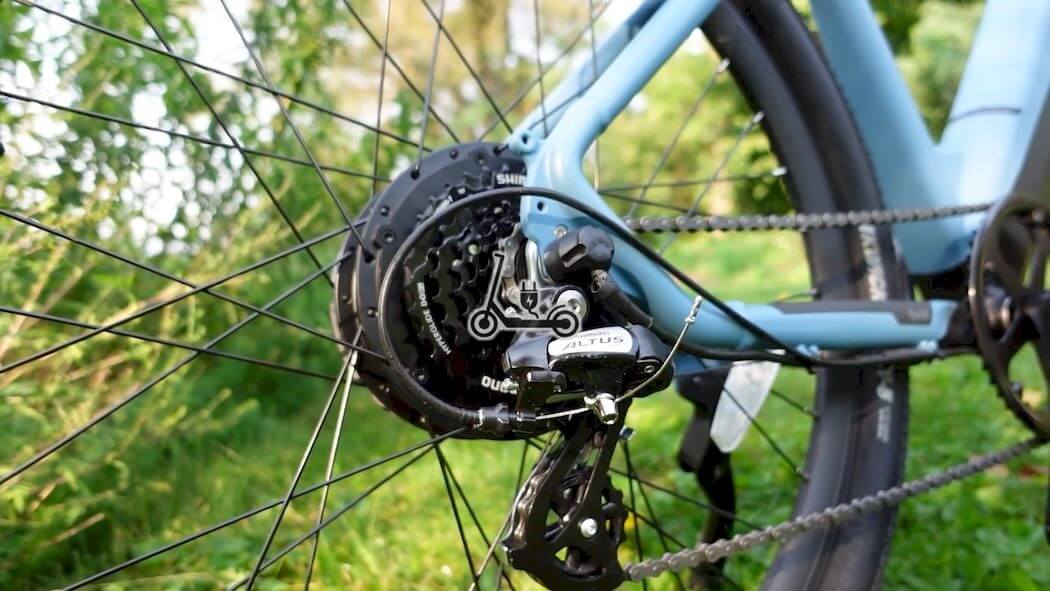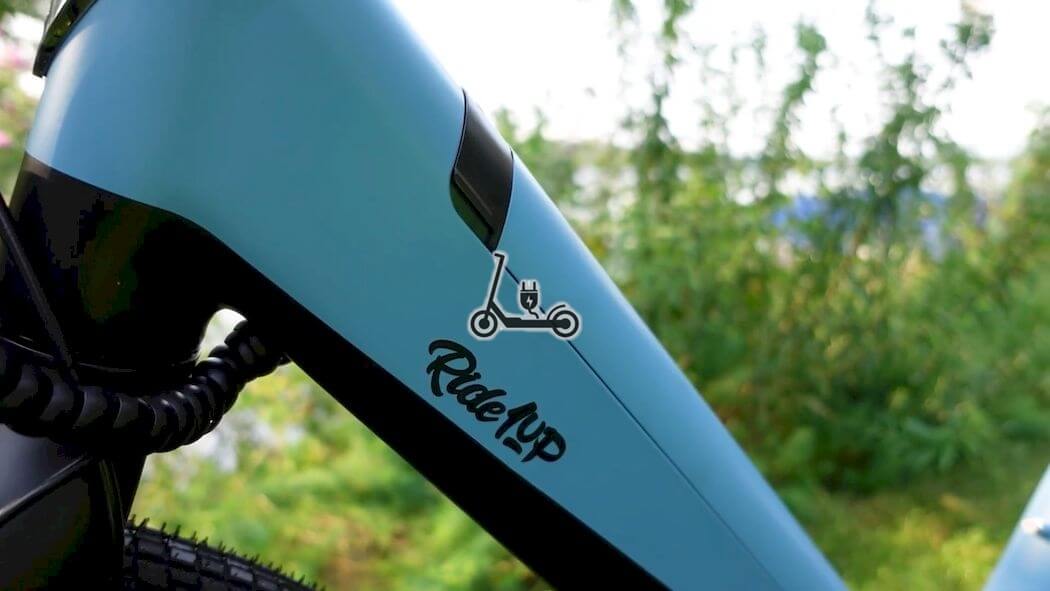A good e-bike doesn’t have to be expensive or sophisticated, as demonstrated by the Ride1Up Core-5. A bike also doesn’t have to be pricey to look amazing.
The Core-5 doesn’t have a ton of high-end components, but it still accomplishes what you need it whole do: help you as you pedal around town running errands. The pricing is excellent, and the ride is enjoyable and pleasant. Although the motor is not the strongest you can purchase, it is still powerful enough to assist you as you travel over flat or gently rolling terrain. If you want to make a little money from an electric bike, this is one of the better options to look into.
By maintaining a lean operation throughout the whole supply chain, Ride1Up keeps the cost of their bicycles reasonable. Although it is of a different nature, efficiency is still very important. For the majority of individuals, efficiency without regard to cost isn’t particularly important. Ride1Up has carefully considered their options and is able to provide high-quality, affordable items that vary from $1095 to $2195.
Although it isn’t the cheapest item in the lineup, it comes close. It became apparent to me during my time with it what story it has to convey. The Ride1up Core-5’s story is entirely around leisurely town riding. Continue reading to find out more about the particulars that contribute to the story’s telling as well as what it feels and touches like.
| Motor | 48V Geared Hub Shengyi Motor 750w Sustained |
| Controller | 48V22A Lishui Sine-wave (potential peak output of 1000w) |
| Battery | 48V12.8ah Reention Eel Pro LG Cells, Smart BMS |
| Display | KD21C Adjustable Speed LCD |
| PAS Sensor | Integrated Sensitive Cadence Sensor |
| Fork | Smooth Welded 6061 Alloy |
| Brakes | Tektro 160mm Mechanical Disc, w/ Electric Cut Off Sensor |
| Tires | Kenda Kwick Seven.5 27.5”x2.2 |
| Shifters | Shimano ASLTX30R 7-speed |
| Spokes | 13G Black Stainless steel |
| Saddle | Selle Royal Freeway Plush Gel |
| Seat Post | Promax 350mmx31.6mm Angle Adjustable Seat Post |
Video Review of Ride1UP Core-5
Ride1UP Core-5: Design and Build Quality
A wide variety of riding styles are included in the area of electric bicycles. There are competitive race vehicles with pedal assistance available. However, that is not typical and is definitely not the case for the Ride1Up Core 5.
The Core-5 is available with either a regular or step-through frame layout. The top tube is completely removed in the latter, making mounting and demounting simpler. There are three color choices for the Core-5, which according to Ride1Up comes in one size to fit riders from 5’6″ to 6’4″
Although the huge down tube that contains the detachable battery makes it immediately obvious that the Core-5 is an e-bike, the bike itself appears quite svelte. The Core-5 looks high-end despite being positioned as an entry-level e-bike in terms of price and construction thanks to a sculpted top tube/head tube junction.
The 27-5-inch wheels on the Core-5 help to keep the standover height low so that a wider spectrum of riders can use it. The 2.2-inch wide tires on my test bike can be operated at a low tire pressure to improve comfort and compliance.
When carrying the bike with baggage or a child carrier, Tektro mechanical disc brakes provide a lot of stopping power.
Unbranded and located in the rear hub, the motor’s maker is listed on Ride1Up as Shengyi. You have a lot of alternatives for riding both with and without motor aid thanks to its coordination with a Shimano 7-speed drivetrain.
Looking at the stack, reach, and wheelbase values is my preferred method of analyzing bicycle geometry. A rudimentary glimpse of how forward and upright the bike will feel is provided by stack and reach. The wheelbase then adds some context by giving a sense of how stable or unsteady the bike will feel. In the case of the Ride1Up Core 5, the numbers for the stack are missing, and the listed reach is incorrect.
The Core-5 is a Class 3 electric bicycle. It has a pedal-assist option that helps you go up to 28 mph and a throttle feature that helps you go up to 20 mph. The buttons on a black and white LCD head unit positioned on the handlebar are used to operate the pedal-assist settings. Additionally, you may view your current speed, the odometer, and other ride-related data here.
A robust and convenient kickstand is attached to the chainstay. The Core-5 does not, however, have any integrated front or rear lights, in contrast to many other e-bikes even in this entry-level price range.
There are many similarities between the two motorcycles despite the substantially higher price. You can see how Trek offers that particular bike as a very upright, cozy city bike. The geometrical numbers match up rather nicely, as was to be expected.
The comparison to that Trek also contributes to some understanding of sizing. Only one size of the Ride1Up Core 5 is available. The rider’s height ranges from 5’6″ to 6’4″, however there is no description of what size that rider is. Comparing the statistics, I had a hunch that would correspond with what most companies refer to as a size big frame. There are a lot of options with this bike because it is so laid back, but for most businesses, the frame should be about the size of a big.
Ride1UP Core-5: Motor and Driving
The Core-5 should still be possible for you to assemble right out of the box even if you are not skilled with tools or have never built a bike before. But in order to be sure that everything is set correctly, it is best to take it to a specialist. Out of the box, my test bike required gear and brake changes, and all bolts needed to be properly torqued to specification.
Quick release levers are not included with the wheels. You must fasten them using bolts instead. Bolts give riders peace of mind who might not be familiar with how fast release levers function and also make them tougher to steal, but this makes it less practical to load the bike into the back of a car.
A 48V Geared Hub Shengyi Motor with a nominal rating of 500w is used by the Ride1Up Core 5. This can best be explained by saying that they are inexpensive, off-the-shelf components from well-known Chinese brands.
Depending on how familiar you are with electric bikes, you may or may not be familiar with them, but they are a significant player in the market. The brand is typically more prevalent with more affordable options, and their main point of competition is pricing. However, they are a well-known brand that consistently performs well. The Core 5’s motor is a rear hub motor with a pedal assist sensor that is cadence-based.
Using the button on the LCD display unit mounted on the handlebar, the Core-5 may be powered on. From there, you can also change the assist level. The screen is simple to read and clearly shows information such as your speed, total miles traveled, assist mode, battery life, and other crucial ride statistics.
On the left side of the handlebar, the throttle lever is located next to the grip. It activates effortlessly, in fact, so smoothly that it’s simple to punch it a little too hard and start moving extremely quickly. Unless you are starting from a complete stop on a hill, it is better to use a light touch when applying the throttle. It’s best to use the throttle carefully because excessive use will quickly drain your battery.
However, Ride1Up made the smart choice to equip the Core-5 with a 7-speed Shimano transmission. If the help level isn’t quite powerful enough, you can spin more easily up steep hills if you have a low bailout gear.
With a big lever to move in one direction and a big button to move in the other, the shifter is simple to use.
The fact that the Core-5 has disc brakes made me delighted. You will have mechanical disc brakes rather than hydraulic disc brakes at this price point. Although mechanical disc brakes aren’t as strong or reliable as hydraulic disc brakes, I thought the Core-5’s braking power was rather good, especially in rainy circumstances.
Ride1UP Core-5: Battery and Range
The Core-5’s battery is a 48V, 10.4ah Reention Eel Pro battery with LG cells and a Smart Battery Management System, according to the Ride1Up website. The only branding visible on the battery is that of Tian Fu Li, most likely the supplier of batteries to Reention.
To adequately discuss the battery system, it must be divided into several parts. Reention is the organization in charge of the casing and fitment. Another significant Chinese manufacturer of electric bicycle components, this time using the Eel Pro model. The battery cells are an LG product because Reention does not make those particular components. This is a fantastic option because LG is one of the biggest battery producers in the world.
According to Ride1Up, the battery range varies from 20 to 40 miles, depending on your usage of the aid level, among other things. For the majority of e-bikes, this battery range is very common.
I was able to use up more than half of the battery life on my first trip, which was around four miles long, by mostly using the throttle. To test how it would effect the battery, I utilized the throttle on this ride much more than I normally would on any ride.
The size of the battery is the final component in the battery puzzle. The battery size is listed by some businesses in terms of volts and amps. You may see that in this example with 48V and 10.4ah. Although it’s a simple conversion, I find that to be more perplexing than watt-hours. Using the equation (Ah)*(V) = (Wh), we can calculate the battery size to be little around 500Wh. That also exactly matches the range of 20–40 miles that I believe to be extremely probable based on the figures.
Discussions on batteries and motors can rapidly become highly technical.
Ride1UP Core-5: Conclusions
The Core-5 provides a smooth, appealing ride that works well on flat ground. On steeper hills, the motor feels underpowered, although it provides sufficient of assistance while navigating generally flat city streets. (If you reside in a hillier area, you should consider some of the more potent options in our list of the best electric bikes.) When you press the throttle or begin pedaling, the motor starts up instantly.
Taller riders may feel more comfortable on the Aventon Soltera among electric bikes that cost approximately $1,000; but, if you want a 7-speed transmission with that bike, it will cost you more. However, the Core-5 is a fantastic choice if you’re under six feet tall and need an economical, basic e-bike to get you around to
The Ride1Up Core 5 was comparable and, in some cases, much better for only about a fifth of the cost. The smoothness and simplicity of the ride contribute to the great riding quality. The more expensive bike did a better job of being a high-end bike, while the Core 5 was superior for pedal-assist city riding. Without any of the jerkiness some electric bikes have, takeoff is strong.
A bike like the Ride1Up Core 5 is what I picture as the electric bicycle of the future. It has a bike-like appearance, isn’t unduly heavy, rides smoothly and comfortably, and is reasonably priced. Briefly, it’s a wise purchase.











[…] capable and reasonably priced two-wheelers. This group was founded when Kevin Dugger, the owner of Ride1Up, realized that the majority of e-bikes available on the market cost around $2,000, which is money […]